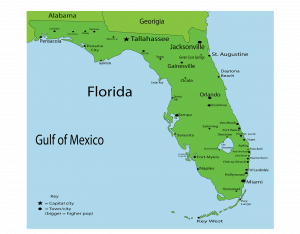Some Famous Nicknames for NYC (2025)
Go Back To Previous PageNew York City, affectionately known by various nicknames such as “The Big Apple” and “Gotham,” has developed a vibrant identity over the years. As the most densely populated city in the United States, NYC serves as a hub for culture, finance, technology, and the arts. Let’s explore the meanings and origins of some of the most popular nicknames that reflect the deep affection people have for this remarkable city.

The Big Apple
The term “Big Apple” is one of the most famous nicknames for New York City.
People have associated this nickname with the city since the 1920s. It originated during horse races held in and around New York City. Indeed, the winning horse would receive the biggest apple.
Over time, this term began to refer not only to the horse racing industry in the city but also to New York City itself. Jazz musicians even wrote songs about the “Big Apple,” celebrating it as the largest, best, and brightest city.
In 1971, an advertising campaign promoted the nickname to attract tourists. The campaign depicted New York City as a large, cheerful, bright red apple, emphasizing it as the best city in the world.
Since then, “The Big Apple” has become New York City’s most recognizable nickname.
The City That Never Sleeps
“The City That Never Sleeps” is a well-known nickname for New York City. It gained popularity in the 1970s and 80s through the song and movie “New York, New York.”
However, people used the nickname as early as the 1880s. Jacob Riis referred to a neighborhood in NYC in his 1898 book, *Out of Mulberry Street: Stories of Tenement Life in New York City,* stating, “The Bowery never sleeps.”
In the early 20th century, newspaper articles used “The City That Never Sleeps” to describe NYC due to its nighttime mail delivery and the presence of electric and gas lighting.
Today, this nickname captures the city’s energetic and fast-paced atmosphere.
The Empire City
The term “Empire City” is a nickname for New York City (NYC). In December 1784, George Washington referred to New York State as “the Seat of the Empire.” He highlighted the state’s significant influence and prominence reminiscent of the great empires of ancient civilizations.
Then, New York City earned the nickname “Empire City” because of its status as a major economic, cultural, and political hub within the “Empire State.”
The City So Nice They Named It Twice
One of the most famous nicknames for New York City is “The City So Nice They Named It Twice.” This playful nickname highlights the city’s charm and the unique fact that both the city and the state share the same name.
The phrase was first used in 1959 in the jazz song “Manhattan.” It begins with a spoken word monologue by jazz lyricist and singer Jon Hendricks, who states, “New York, New York – a city so nice, they had to name it twice.”
The Melting Pot
Another well-known nickname for New York City is “The Melting Pot.” This title reflects how people from all over the world come to live and work in this massive, bustling city. They bring with them their languages, traditions, and cuisines, creating a vibrant tapestry of diversity that makes NYC a true melting pot of international influences.
In a travel narrative written in 1905, Henry James described New York City as a “fusion, as of elements in solution in a vast hot pot.” Additionally, in the 1908 play “The Melting Pot,” a Russian immigrant arrives in America with the hope that all ethnicities will “melt away.”
The term “melting pot” came to symbolize the blending of different cultures and ethnicities, illustrating how diverse elements can come together harmoniously.
Gotham
In 1807, Washington Irving coined the nickname “Gotham” for New York City as a playful jest, inspired by an old folk tale called “The Wise Men of Gotham.” In this story, the villagers pretended to be foolish to prevent the king from building a road through their town. As a result, the king chose to build the road elsewhere, thinking it wise to avoid the seemingly foolish residents of Gotham.
At first glance, one might assume that New York City’s nickname “Gotham” comes from the popular Batman comics. However, this nickname actually predates the comic series.
The term “Gotham” dates back to the early 19th century when Washington Irving, a well-known American author, first used it in his satirical periodical, *Salmagundi*. Irving borrowed the name from a village in England known as Gotham, which, according to folklore, was inhabited by simpletons.
The villagers of Gotham, England, pretended to be mad to avoid a royal visit, which inspired Irving to use the name as a playful reference to the residents of New York City. Over time, “Gotham” has evolved in popular culture to symbolize the city’s complexity, mystique, and sometimes inscrutable character.
New Yorkers have embraced this humorous nickname over the years. In 1940, Batman comics introduced the name “Gotham City”, further popularizing the moniker and adding to its charm.
Metropolis
People use the term “Metropolis” to refer to New York City (NYC). It denotes major cities that act as hubs for commerce, culture, and industry.
Also, NYC is a large, bustling, and highly developed urban center, making it deserving of the nickname “Metropolis.”
Additionally, the name is famously associated with the Superman comics, which first mentioned it in 1939. The comics were inspired by the 1927 film “Metropolis.” Comic book writer Frank Miller once stated, “Metropolis is New York in the daytime; Gotham City is New York at night.”
The Center of the Universe
New York City Mayor Robert F. Wagner Jr. frequently used that adage during his terms from 1954 to 1965 and sometimes referred explicitly to Times Square.
It is commonly accompanied by identifying phrases such as “Theatrical Center of the Universe” or “Economic Center of the Universe.”
The Capital of the World
Taking inspiration from Rome, known as Caput Mundi or “Head of the World,” New York City earned the title “The Capital of the World” in E.B. White’s 1948 essay, Here is New York. As a hub of cultural diversity, media influence, finance, arts, fashion, food, and technology, this nickname seems quite fitting.
Like other nicknames associated with NYC, it is sometimes accompanied by additional descriptors, such as the “Food Capital of the World” or the “Gay Capital of the World.”
The Five Boroughs
Referring to New York City as the “Five Boroughs” denotes the five counties that comprise the city: Manhattan, Brooklyn, Queens, The Bronx, and Staten Island. The phrase “The Five Boroughs” offers a convenient way to encompass all of NYC and its distinct structures.
Knickerbocker
The nickname for New York City has an amusing origin, stemming from the arrival of early Dutch settlers in the New World. They wore a style of pants that rolled up just below the knee. These pants were called “knickerbockers,” or simply “knickers” for short.
The intriguing part is that the nickname is linked to the same person who created the concept of “Gotham City.” That’s right—Washington Irving is also the mastermind behind this well-known New York City nickname.
The nickname began to gain popularity in 1809 when Irving wrote a satirical book under the pseudonym “Knickerbocker.” In this book, he referred to “Knickerbockers” as New Yorkers who could trace their ancestry back to the original Dutch settlers.
Before long, the nickname was inseparable from New York City. In fact, one of the city’s professional basketball teams is called the New York Knicks, which is an abbreviation of “Knickerbockers.”
Nicknames of NYC Bottom Line
New York City is truly one of a kind. It is bustling with energy, filled with people working, sightseeing, vacationing, and having a great time. From world-renowned Broadway shows to countless tourist attractions and an endless array of food and fashion, NYC is undoubtedly one of the greatest places on earth.
The city’s nicknames, such as “The Big Apple,” symbolize its prominence and allure, while “The City That Never Sleeps” reflects its ceaseless energy and activity. Terms like “The Melting Pot” highlight its rich cultural diversity, and names like “Gotham” and “Metropolis” acknowledge its influence in popular culture and literature.


